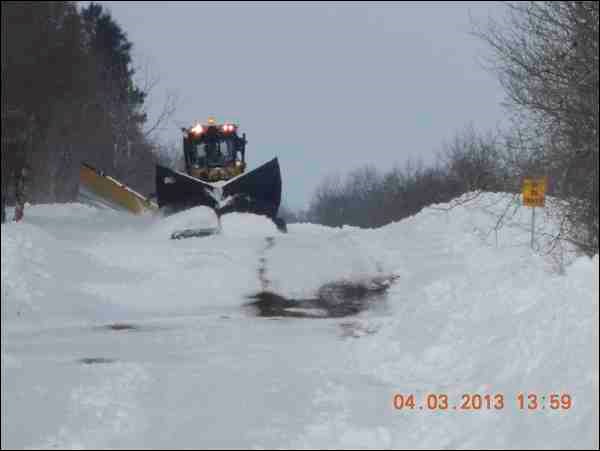The Rural Municipality of Leask No. 464 held its annual ratepayers meeting in Leask the evening of April 4.
A large group of ratepayers from within the RM joined councillors Steve Nelson, Division 1; Real Diehl, Division 2; Don Kavanagh, Division 3; Myles Robin, Division 4; Victor Unyi, Division 6 and Reeve Jim Joanette for the meeting. Robert Girod, councillor for Division 5 was absent.
The meeting chair was Jim Joanette and recording secretary was Riannon Nelson, who is also assistant administrator for the RM.
Reeve Joanette introduced guest speaker, Ron Crush, Saskatchewan Water Security Agency supervisor for the northwest regional integrated water service division stationed in North Battleford. The Water Security Agency, formerly the watershed authority, oversees the regulations of water bodies in the province.
"It is the rural municipality's responsibility to maintain the natural grade," stated Crush who also commented on the determining factor in the amount of water in the spring runoff is dependent on the water content in the snow.
"In the 38 sites that were tested, the moisture equivalent in the snow was higher than in 2011 but not as high as in 2007," commented Crush explaining that the 2012/13 snowfall is very comparable to those winters of the 1950s and 60s.
Crush explained the Emergency Flood Damage Reduction Program (EFDRP). The program provides assistance with the implementation of emergency flood damage reduction or prevention measures in 2013 for communities, rural municipalities, businesses, non-profit organizations and individual farm and country residences to prevent damage from imminent flooding. Financial assistance provided by the Water Security Agency will fall in accordance with various categories and regulations. Depending on the situation, applicants can receive from 50 per cent to 100 per cent financial assistance.
"There has been a lot of development in the last 34 years and we as individuals have not done a good job of assessing the development and its risk," says Crush, emphasizing that the responsibility goes back to the municipalities and their official community plans (OCP). "These OCPs assist with identifying flood and other risk categories with in the region. RMs must be cautious when approving subdivisions such as country residential."
Crush continued by emphasizing the importance of RMs maintaining natural drainage. "It is the RM council's decision to decide whether to put in bridges or culverts and of course, economics will play a large factor in the decision making process. The RM must also be mindful of where the water will flow to and the RM must also work closely with neighbouring municipalities," said Crush. "It is also the responsibility of the ratepayers to identify and inform council of any issues. We must realize that the RM cannot do it all so it is best to define what the RM can and cannot do."
Joan Sanftleben has been working with the Provincial Disaster Assistance Program. An engineer is brought in to assess the flooded areas. The engineer then provides recommendations to the provincial government as to what should be done to address the issue. The RM must then be diligent in completing the project as close to the recommendations as possible to ensure compensation/assistance.
Some topics of concern raised from the floor include the secondary highway access to Honeywood Heritage Nursery. Manager Judy Harley explained how the holes and broken pavement, caused by heavy trucks, is a road hazard and deterrent for tourists.
Another topic of discussion was grid road no. 783. Some ratepayers in attendance were quite disgruntled because of the use of money that went towards the upgrading of the grid to heavy haul specs. It was emphasized once again that grid 783 was the only grid within the RM that met the criteria for the grant which was approved by RM council in 2008. The cost of the road construction was equally divided into thirds between the RM, provincial government and federal government.
The total road construction was for 13.8 kilometres with 11.03 kilometres completed to date. The completion of the remaining 2.77 kilometres has been disputed, resulting in council applying for extensions, one of which was approved for 2012 and last month council again applied for another extension until 2014. This has also been approved. The cost to date for the 11.03 kilometres is $1,610,400 of which the RM contributed $404,355.
Other topics of concern raised from the floor included road maintenance and gravel application, dock policy, assessments on cabins and the purchase of equipment by the RM instead of tendering out jobs.




